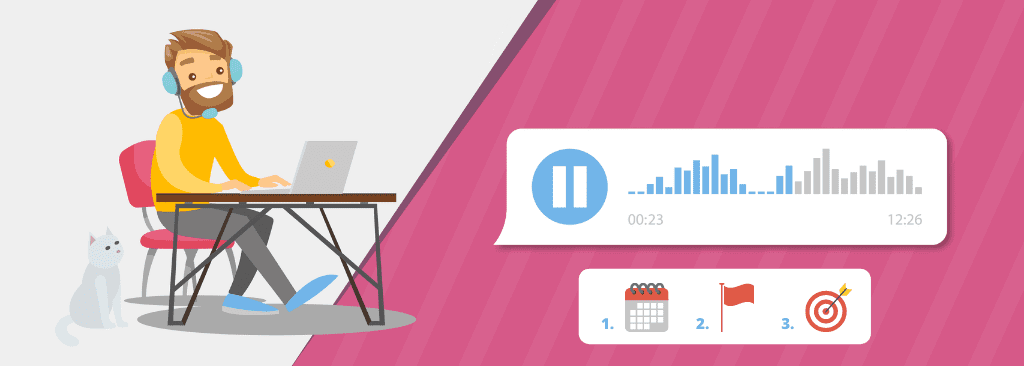Use Cases of Voice Analytics in a Contact Center
Supervisors and QA managers in a call center listen to only 2% of the recorded calls unless something unfavorable happens.
These recordings just sit on the storage servers and get listened to only when there are complaints. Then you identify what went wrong, but the damage is already done.
In the case of voice analytics, they can rapidly analyze call recordings to identify compliance issues, misselling, privacy issues – either warn the agent or escalate to a manager to take corrective action.
This would ensure that your call center is compliant with regulations and helps you understand grey areas to improve your call center function’s overall productivity and happiness.
Well..this sounds interesting. Can we talk about some use cases of voice analytics?
That would be a good starting point to appreciate the value that voice analytics can bring to your function.
1. Appointment Booking
A healthcare facility’s call center received enormous calls to book appointments to meet doctors in their facility. The call center was happy to help their patients with it. But, when the healthcare facility analyzed its call recordings, almost all the patients mentioned that they visited their website, had trouble booking appointments, and had to reach out to the call center.
This was an insight they wouldn’t have had automatically from their call recordings without a voice analytics platform. So, now the healthcare facility tweaked their book appointments feature on their website, which started working well.
Now, the number of appointments hasn’t come down, but the number of patients reaching out to the call center to book appointments has come down.
2. Compliance Issues
Insurance selling is a regulated industry, and you will have to make sure that the customer understands all the required disclosures during the sale. Besides, you can incentivize a customer during the insurance purchase.
One of the insurance firms was reaching out to many prospects, but the sale closures turned invalid. When the voice analytics platform assessed the recordings, it glaringly revealed that the sales reps were not reading the required disclosures during the sale. This is a red flag process, and the sale loop wasn’t closed.
It also allowed the insurance firm to figure out the specific reps who weren’t doing this and helped create a training plan for those agents.
3. Identifying Self-Service Options
When the pandemic struck, the call volumes at a bank’s call center went up drastically. They were moving their agents to work from home, and the call volumes were increasing. So, the time they took to resolve customer queries went up, which made their customers unhappy.
They decided to automate their processes to handle their customer queries better. There wasn’t any consensus on what could be automated. Voice analytics of their calls revealed the commonly asked straightforward transactional queries, and they took those up for their first level of implementation.
This helped the bank set up self-service tools on their digital platforms. It brought down the number of calls that the call center was receiving, and it helped in addressing their customer queries faster and better.
This is only the tip of the iceberg on what is possible with voice analytics. The opportunities that voice analytics present are enormous – enhancing customer experience, driving sales, reducing customer attrition, and boosting employee satisfaction, among others.
